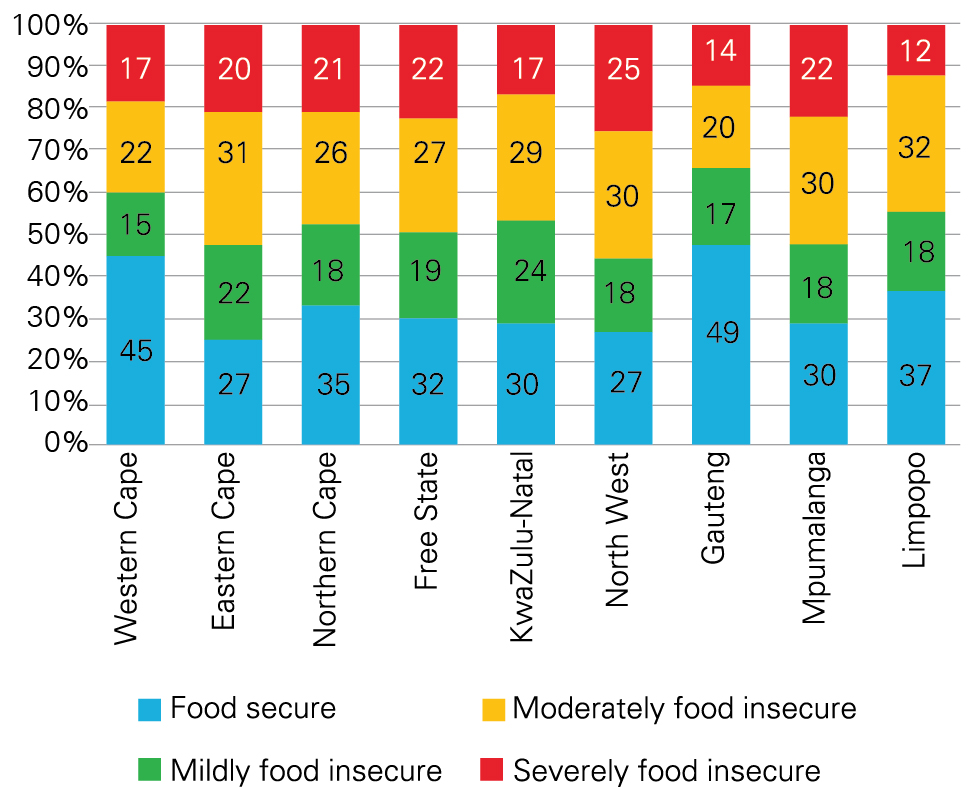
Posted on August, 7, 2024 at 09:10 am
South Africa is facing a deepening malnutrition crisis, characterised by a simultaneous prevalence of undernutrition, hidden hunger, and a high rate of obesity due to poor-quality diets.
This is outlined in the National Food and Nutrition Security Survey conducted by the Human Sciences Research Council, which provides a comprehensive look into South Africa’s nutritional challenges.
Spanning from 2021 to 2023 and covering data from over 34,500 households, the survey represents the first in-depth, nationwide study on food and nutrition since 1994.
Professor Thokozani Simelane, the principal investigator, emphasised that South Africa is experiencing “the triple burden of malnutrition,” where households are struggling with undernutrition, hidden hunger, and overweight or obesity due to inadequate diets.
According to StatsSA, the worsening food security situation is closely linked to high unemployment rates, widespread poverty, and rising living costs. These factors collectively make food more expensive and less accessible to many South Africans.
The survey uncovered alarming rates of food insecurity across several provinces and revealed that nearly 50% of adult South Africans are either overweight or obese.
This contrasts sharply with the national narrative of food security, underscoring the discrepancy between official data and ground realities.
This complex issue, which the fiscus spends tens of billions on annually to tackle, is impeded by numerous woes that the country is facing.
To tackle South Africa’s malnutrition crisis effectively, various experts are calling for a unified effort from government, private sector, and civil society through targeted interventions and investments in sustainable solutions.
Economic and Social Challenges
Despite significant government investments in various policies and programmes aimed at improving food security—such as child support grants, school feeding schemes, and farmer support programs—the effectiveness of these interventions has been undermined by what some describe as ineffective and poorly coordinated government interventions.
Senior researcher Adrino Mazenda points out that while some of these programs have made some significant inroads in the fight against hunger, the execution of some crucial ones, including the Expanded Public Works Programme, has been far from ideal.
“Execution has been suboptimal – poor coordination among government departments and agencies about priorities has led to interventions being ineffective,” said Mazenda.
Findings on malnutrition
The survey highlights that the primary factors contributing to malnutrition in South Africa include poverty and the rising cost of food.
Many low-income households are unable to afford nutritious food, with only 58.1% of surveyed households maintaining acceptable diets.
A significant portion of these households rely on nutrient-poor food groups like cereals, condiments, sugars, and fats, leading to inadequate intake of essential nutrients.
The reliance on such foods is a direct result of financial constraints, forcing families to make difficult choices about their diet.
The Pietermaritzburg Economic Justice & Dignity Group (PMEJDG) reinforces these findings with their monthly Household Affordability Index research.
They report that minimum wage workers, as well as those receiving grants, consistently face a substantial food shortfall.
For a family of four, the available budget falls significantly short of the Food Poverty Line, leaving families with limited means to afford nutritious food – even when using grants from the government aimed at alleviating this, like the child support grant.
The high and seemingly ever-increasing cost of staple foods means that many families must sacrifice nutritional quality for affordability, leading to numerous health risks.

Source: Human Sciences Research Council
Food Insecurity Levels
The survey also provides a detailed breakdown of food insecurity levels in South Africa:
Regions like the North West exhibit particularly severe food insecurity, with over half of households facing moderate or severe food insecurity.
In this region, 10% of households experience severe hunger, nearly double the national average, highlighting the need for targeted intervention.

Source: Human Sciences Research Council
Proposed Interventions
Recently, President Cyril Ramaphosa announced plans to expand the basket of essential food items exempt from VAT.
The Presidency said that this measure aims to alleviate the financial burden on households and make nutritious food more affordable.
Additionally, the report and writings by the experts have proposed several key interventions to address the malnutrition crisis, including:
Source: Businesstech